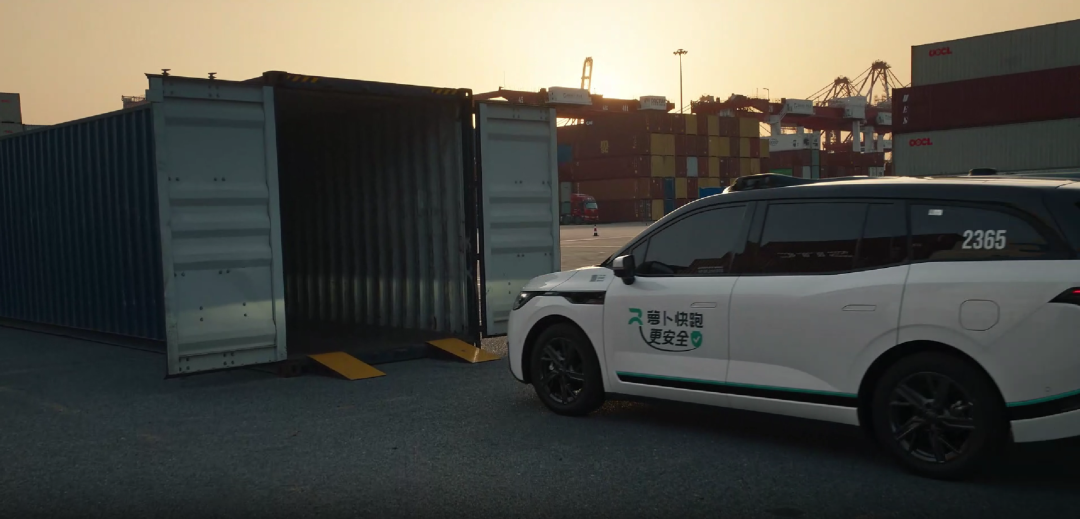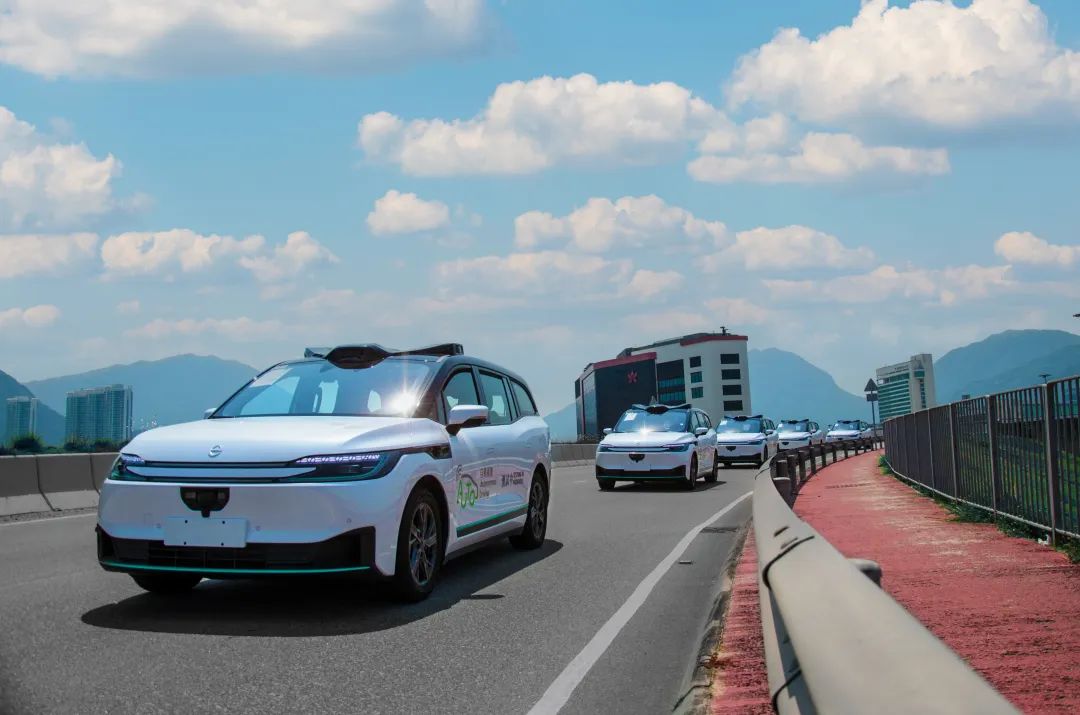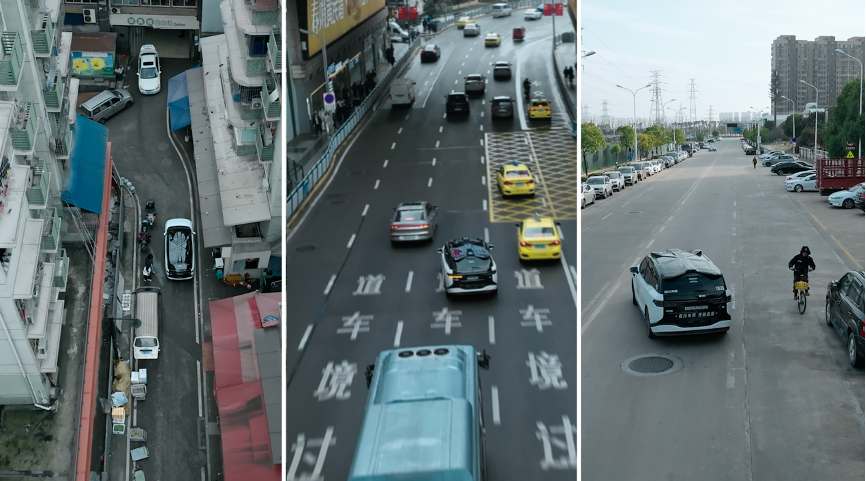China's Autonomous Driving Ventures Overseas, Competing for Global Leadership
![]() 05/22 2025
05/22 2025
![]() 407
407
Written by | Xu Zhi, Hao Xin
Edited by | Wang Pan
On May 21, Baidu released its Q1 financial report, revealing that it had provided over 1.4 million ride services globally in the first quarter, marking a 75% year-on-year increase. As of May, Robotaxi has offered over 11 million ride services worldwide.
Behind this rapid surge in service volume, Robotaxi's overseas expansion is also gaining momentum, having already entered Dubai and Abu Dhabi, with its testing area in Hong Kong further expanded.
Since the beginning of this year, there have been frequent announcements regarding Robotaxi's overseas expansion, signaling a wave of Chinese autonomous driving ventures expanding internationally.

Currently, with the proliferation of AI applications, autonomous driving, as a quintessential real-world application of large models, is at the center of global competition. Leading global companies, including Baidu's Robotaxi, Google's Waymo, and Tesla, are accelerating their overseas layouts, with the rivalry between Chinese and American autonomous driving firms extending from their home markets to overseas markets.
As the technological gap between hardware and software in autonomous driving continues to narrow, competition will inevitably shift from technology to actual service provision, testing companies' abilities to solve practical problems. Since actual service provision represents the "last mile" for autonomous driving implementation, and larger scale facilitates experience and strength accumulation, the balance between cost and revenue, scale, and efficiency becomes particularly crucial.
China's Autonomous Driving Ventures Overseas
This year, technological breakthroughs and increased maturity have significantly reduced the cost of key components, while policies worldwide have been progressively relaxed. These two factors have propelled the implementation of autonomous driving to expand from market depth to breadth.
Last May, Robotaxi unveiled the pricing for its sixth-generation driverless car, priced at a mere 204,600 yuan.
Additionally, the continuous improvement of policies and regulations has objectively accelerated the implementation of autonomous driving. China's support policies for L4 autonomous driving are forming a three-dimensional system encompassing "central top-level design + local pilot breakthroughs + industrial ecosystem collaboration," including the introduction of special regulations in first-tier cities such as Beijing, Shanghai, and Guangzhou, the expansion of multiple test zones, and the promotion of road intelligence transformation nationwide.
Abroad, the European Union plans to launch the world's first ethical guidelines for autonomous driving, and over 20 states in the United States have passed autonomous driving bills.
The frequent introduction of policies has greatly spurred the large-scale implementation of relevant companies. Following Robotaxi, companies like WeRide and Pony.ai have also ventured overseas, fostering a competitive landscape.
In April this year, Waymo announced its entry into Tokyo to conduct autonomous vehicle testing, collecting Tokyo traffic data to pave the way for the subsequent launch of Robotaxi. Due to factors such as the Japanese market and policy environment, Waymo primarily enters the market through cooperation with local travel service providers. Tesla plans to launch an autonomous taxi fleet in Austin, USA, in June, with the first batch comprising 10-20 Model Y vehicles, gradually expanding its scope to cover more cities.
Compared to Waymo and Tesla, Robotaxi's overseas moves are much larger, following its services and experience accumulation in numerous domestic locations, showcasing a clear strategy and steps.
Compliance is a prerequisite for Robotaxi's overseas implementation. On March 28, Robotaxi announced the signing of a strategic cooperation agreement with the Dubai Roads and Transport Authority (RTA) to conduct large-scale tests and services of autonomous driving in downtown Dubai. More than 20 days later, on April 18, Robotaxi signed a memorandum of understanding with the Dubai Roads and Transport Authority, planning to launch a large-scale autonomous driving business layout in Dubai.
If the layout in Dubai serves as a training ground for Robotaxi's overseas market expansion, its recent moves in Hong Kong aim to accumulate relevant experience for future exploration of right-hand drive and left-side traffic markets.

Besides the above regions, on May 13, media outlets cited informed sources reporting that Baidu is actively exploring the expansion of Robotaxi services to Switzerland and Turkey, accelerating its overseas expansion. The news mentioned that Baidu is already planning to establish an entity in Switzerland as a forward base for its autonomous driving business to go overseas.
After accumulating experience in right-hand drive and left-side traffic in Hong Kong, entering the Swiss market holds even more symbolic significance. Renowned for its strict traffic regulations and safety laws, the country is globally recognized as a testing ground for autonomous driving technology and safety. The successful implementation of Robotaxi signifies that its safety system has passed the verification of the world's top standards.
Entering the Turkish market involves both strategic and tactical considerations. As a transportation hub between Europe and Asia, Turkey holds strategic value as a springboard for exploring the Eurasian and African markets, enabling market and technology radiation centered on it. The dense population and complex road network system there may become an important testing ground for Robotaxi's overseas implementation.
From a Domestic "Competitive King" to a Global "Practitioner"
Robotaxi's global layout represents a transformation from "depth" to "breadth," that is, after fully accumulating large-scale capabilities, service experience, and safety guarantees in the domestic market, it gradually "exports" to overseas markets.
Judging from current data, Robotaxi's domestic volume, technology, and implementation experience have already validated the feasibility of large-scale overseas implementation.
Currently, Robotaxi has landed services in over ten cities, including Beijing, Shanghai, Guangzhou, Shenzhen, Wuhan, and Chongqing, with a safe driving mileage exceeding 170 million kilometers.
This is due to the cost reduction represented by the price of the sixth-generation driverless car and the scale effect and improvement in service efficiency.
On the "springboard" of the Hong Kong market, Robotaxi has also fully verified its rapid adaptability to right-hand drive and left-side traffic markets.
Since starting road tests in Hong Kong in December last year, Robotaxi has taken only five months to expand its area and conduct passenger trials. Such a rapid implementation process actually benefits from the experience accumulated from landing in multiple cities. At the same time, Robotaxi has become the only autonomous driving company to make substantial progress in Hong Kong, receiving test rides and praise from Chen Meibao, Secretary for Transport and Logistics of Hong Kong, and Li Song'en, Commissioner of the Transport Department of Hong Kong.

Left: Chen Meibao, Secretary for Transport and Logistics of Hong Kong Right: Li Song'en, Commissioner of the Transport Department of Hong Kong
In March this year, Heng Swee Keat, Deputy Prime Minister of Singapore, also took a ride in Robotaxi's sixth-generation driverless car on open roads in Beijing during peak hours, saying, "It's very good. This is the future."
From the deep cultivation in the domestic market to the "rapid strides" in overseas markets, Robotaxi's goal is not only to seize the market and further expand its implementation scale but also to tap into the potential demand and growth space in overseas markets.
For developed countries, the increasingly serious problem of population aging and high labor costs necessitates the use of driverless cars to supplement them; for developing countries, driverless cars are also needed to enhance traffic efficiency and safety.
Ahmed Hashim Bahrozyan, CEO of the Dubai Public Transport Authority, said when signing the memorandum of understanding with Robotaxi that autonomous transportation will improve the quality of life for all segments of society, provide freedom of movement for those who currently cannot drive, such as children and the elderly, save a lot of time and energy, and improve road safety.
An "Overflow" of China's Autonomous Driving Technology
Compared to American autonomous driving companies, Chinese autonomous driving companies represented by Robotaxi have accumulated numerous invaluable practical abilities in numerous "tough battles," which is their biggest advantage in overseas competition.
Numerous facts have proven that companies that have emerged victorious from the "bloody sea" of domestic competition often perform exceptionally well in the international market. TikTok, Temu, BYD, etc., are typical examples.
Under the intensity of competition far exceeding that overseas, domestic companies also face higher overall requirements, making them more competitive than overseas companies in terms of technical capabilities, service capabilities, execution efficiency, and experience accumulation.
Specifically in the field of autonomous driving, on the one hand, China's road conditions are complex, with numerous sudden situations; on the other hand, there are many players with their own strengths, making competition extremely fierce.
In other words, Robotaxi, which has emerged victorious in the domestic market, has accumulated solid basic skills in multiple dimensions. In expanding global market scale, technology export, and user experience, it is easy for Robotaxi to achieve "dimensionality reduction attacks" on overseas competitors. Gary Black, a future fund managing partner, believes that due to China's complex traffic conditions, Robotaxi's driving environment is one of the most challenging.

Data from the past two years shows that under China's complex road conditions, the actual accident rate of Robotaxi vehicles is only 1/14 that of human drivers.
Cao Xudong, the founder of Momenta, also previously stated that because the richness and complexity of road data in China are much higher than those in Europe, the United States, and Japan, the "golden data" accumulated may be more than that of Tesla. This is also why even Tesla's FSD, which has undergone massive data accumulation and verification in the American market, has been repeatedly delayed in entering the Chinese market.
To some extent, Robotaxi's initial layout in "high-standard" markets such as Hong Kong, China, and Switzerland, which are renowned for their strict safety regulations, is also an absolute confidence in its own strength.
Currently, the biggest challenge Robotaxi faces in the global market stems more from differences in policies, business environments, and user habits among different countries, which also puts forward higher requirements for the environmental adaptability and generalization of its technology and operations.
Therefore, entering markets such as Hong Kong, China, Switzerland, Turkey, and the United Arab Emirates can be seen as Robotaxi establishing forward bases, facilitating subsequent radiation from point to area; more importantly, these markets are also "testing grounds" for Robotaxi. Through training in such typical markets, Robotaxi will further enhance its technical practical abilities and environmental adaptability in different markets.
This is a reuse of Robotaxi's domestic market "squat and jump" model in overseas markets. With the "trinity" accumulation of safety intentions, technical capabilities, and implementation experience, Robotaxi is verifying the "Moore's Law" of the autonomous driving industry, and its speed to "run towards" the world will also be faster and faster.





